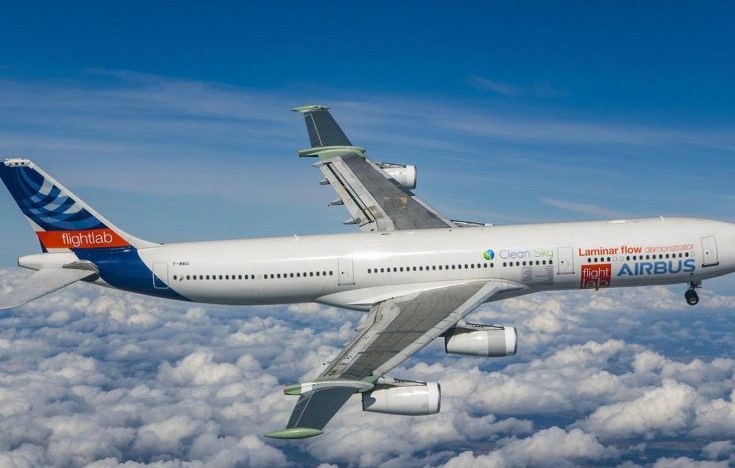
Sustainable transformation in aviation industry
Few industries have been makers of dreams so consistently over the past hundred fifteen years since Orville and Wilbur Wright flew their inaugural plane in a cold North Carolina December.Surfing in the clouds and on the winds, planes have been – and still are – as much objects of desire and dreams as they are the underlying asset of the vital air transportation industry that has proven to be one of the few enablers of the global economy, at least on par with the communication and technology industries.
Aviation is a force for good. And the potential of commercial flight to keep changing the world for the better is almost unlimited. […] Growing and sustainably spreading the benefits of connectivity will require the industry, governments, regulators and local communities keep true to the ‘all-in-it-together’ ethos that was the bedrock of that pioneering first flight. And we should be guided by the long-term interests of all whose lives are positively transformed by commercial aviation every day.
Tony Tyler, Former Air
Transport Association’s (IATA) Director General and CEO
What
legendary aviators like the Wright Brothers, Antoine de St Exupery or Chuck
Yeager, and famed engineers like Kelly Johnson or Artem Mikoyan could not have
foreseen was the extent of the industry’s reach by 2018.
As the
underlying demand continues to grow fast, driven by the ever increasing
affordability of travels enabled by new engineering prowess and new
technologies, the air transportation industry has experienced above-average
rates in the past few years. By 2016, commercial airlines globally flew 3.8
billion people and generated half a trillion dollars in revenue, making it a substantial
part of the global economy, in addition to a vital commodity for entire
economies.
Tackling Climate Change
As the air transportation industry grows in size, it has also realised the need to address its own role in tackling climate change, despite an industry whose intrinsically built on burning fossil fuels.Despite representing only 2% of global man-made CO2 emissions, the aviation industry widely recognizes the need to address climate change. In 2008, leaders from across the industry (Air Transport Action Group) delivered a strategic vision for aviation’s sustainable development, signing the Commitment to Action on Climate Change. Shortly thereafter, the aviation industry adopted a set of ambitious targets to mitigate CO2 emissions from air transport:

- Targeting an average improvement in fuel efficiency of 1.5% per year from 2009 to 2020, leveraging the expectation that each new generation of aeroplane, on average improves its fuel efficiency by c. 20%
- Agreeing on a cap on net aviation CO2 emissions from 2020 (carbon-neutral growth)
- Ambitioning to a reduction in net aviation CO2
emissions of 50% by 2050, relative to 2005 levels
In that context, the industry is pursuing a four-pillar strategy to address its climate impact and to meet its carbon targets:
- New technology, including the deployment of sustainable alternative fuels
- More efficient aircraft operations
- Infrastructure improvements, including modernized air traffic management systems
- A single Global Market-Based Measure to fill the remaining emissions gap
As the number of passengers carried by planes is growing steadily, the industry is taking challenges presented by climate change seriously. The EU supports these efforts via the establishment of a public private partnership between the European Commission and the European aeronautics industry, called Clean Sky. This partnership aims at creating breakthrough technologies to significantly increase the environmental performance of aircrafts.
A corporate commitment
Tom Enders, Airbus, CEOWe also had a heightened focus on Responsibility and Sustainability initiatives, including the philanthropic activities of the Airbus Foundation around the globe.
Such a strong ambition set by the industry is driven by the leaders of the sector, including Airbus, the largest maker of commercial aircrafts in the world, and a critical technology and defence player in the European Union.
From its origins as a pan-European government-led project in the 1970s, the Company grew with strong ethics through the multiple transformations that made it one of the most systemically important companies in Europe and in the world over the past 10 years.
One of the strong commitments made by Airbus was a renewed and sharper focus on Responsibility and Sustainability in the digital age. This commitment is being demonstrated through a full R&S charter spelling out clear commitments, and through initiatives supporting the United Nations Sustainable Development Goals.

Sustainability is therefore one of the key pillars of Airbus’ ESG strategy, and is at the heart of many of the firms’ innovation and research projects for the future.
Bringing Change in a Risk-Adverse industry
For achieving this vision, Airbus takes a bold approach to innovation, building on emerging technologies while investing in other forward-looking start-ups across industries. The outcome of this vision specifically comes through planes that are designed to optimise their fuel consumption, thereby reducing CO2 emissions and cost of operation.Today, Airbus is leading fuel efficiency league tables for regional flights of 500–660 nautical miles (930–1,220 km). In particular, the aircrafts are leaders in fuel efficiency on short-haul flights of 1,000 nautical miles (1,900 km). On par with its peers, Airbus carriers show good efficiency on the long- haul flights.
Pioneering Climate Change Action
In addition to these early successes, as a leading global aerospace company, Airbus is taking a leading role in tackling climate change – both through developing more fuel-efficient aircraft and producing satellites that promote greater understanding of atmospheric pollution.The growing A350 XWB fleet is an example of Airbus’ new generation of eco-efficient planes. Both variants – the A350 900 and its longer twin, the A350-1000 – cut fuel burn and emissions by 25% compared with previous generation wide-body aircraft. But the future will uncover even bigger revolutions brought by Airbus’ R&D efforts. Developing electric flight for commercial aircraft and adding another dimension to urban transport networks will unlock new market opportunities.
Climate-proofing the future of aviation
Airbus’ own history acting as a ‘connector’ (uniting people across Europe in a unique manufacturing system, now extended to assembly lines in three continents) helped the company to be in a position today to take a lead in shaping the future of flight for a better connected and more sustainable world. Developing electric flight for commercial aircraft and adding another dimension to urban transport networks will unlock new market opportunities.Airbus is tirelessly working towards a world of self-piloting urban air mobility vehicles, cargo drones and more autonomous commercial aircraft for a safer, more efficient and eco-friendly global transport network. Some of the live projects underpinning this vision are well known by a larger public already.
Vahana, a project aimed at advancing electric, self-piloted VTOL (Vertical Take-Off and Landing) flight.
In February 2018, Airbus’ Skyways parcel delivery drone successfully completed its first flight demonstration in Singapore, while prototyping for the Quadcruiser – a scalable UAV which combines hover capabilities with the cruising speed of an aircraft – to deliver heavier loads such as medical supplies is also underway.
Development on the multi-passenger CityAirbus, which uses self-piloting, VTOL and electric propulsion technology, with a first flight planned for end of 2018.
Airbus – through its on-demand helicopter platform Voom –partner with Audi to deliver an end-to-end, seamless transportation service, starting in São Paulo and Mexico City.
Recently, another Airbus-led project made the headlines. The BLADE project (Breakthrough Laminar Aircraft Demonstrator in Europe), launched in collaboration with multiple large-scale industrial partners in Europe, and supported by the Clean Sky programme launched its first flight based on an experimental technological design aimed at testing in real conditions a new type of wings that could generate up to 50% less friction for planes.
These innovations are all individually helping Airbus and the Aviation industry to advance towards its sustainable goals but it is exciting to think about a not-too-distant future where these individual technologies will be mature enough to be deployed on commercial planes.
A future based on planes harbouring emerging designs and propelled by electricity, a future with self-piloted VTOL-based electric air taxis for inner city transfers, is perhaps not that far away and have the potential to revolutionize the world in a sustainable way.
Aviation’s future
The aviation industry is heading to the future by extensively investing in sustainable disruptive technology. As one of the leaders in the sector, Airbus is paving the way to eco-friendly global transport network and innovations tackling climate change. There is a long way to go, but the transition is happening now. The pace of this transformation will surely be exceeding the speed of sound not even a hundred years after Chuck Eager exceeded it in his level flight.
